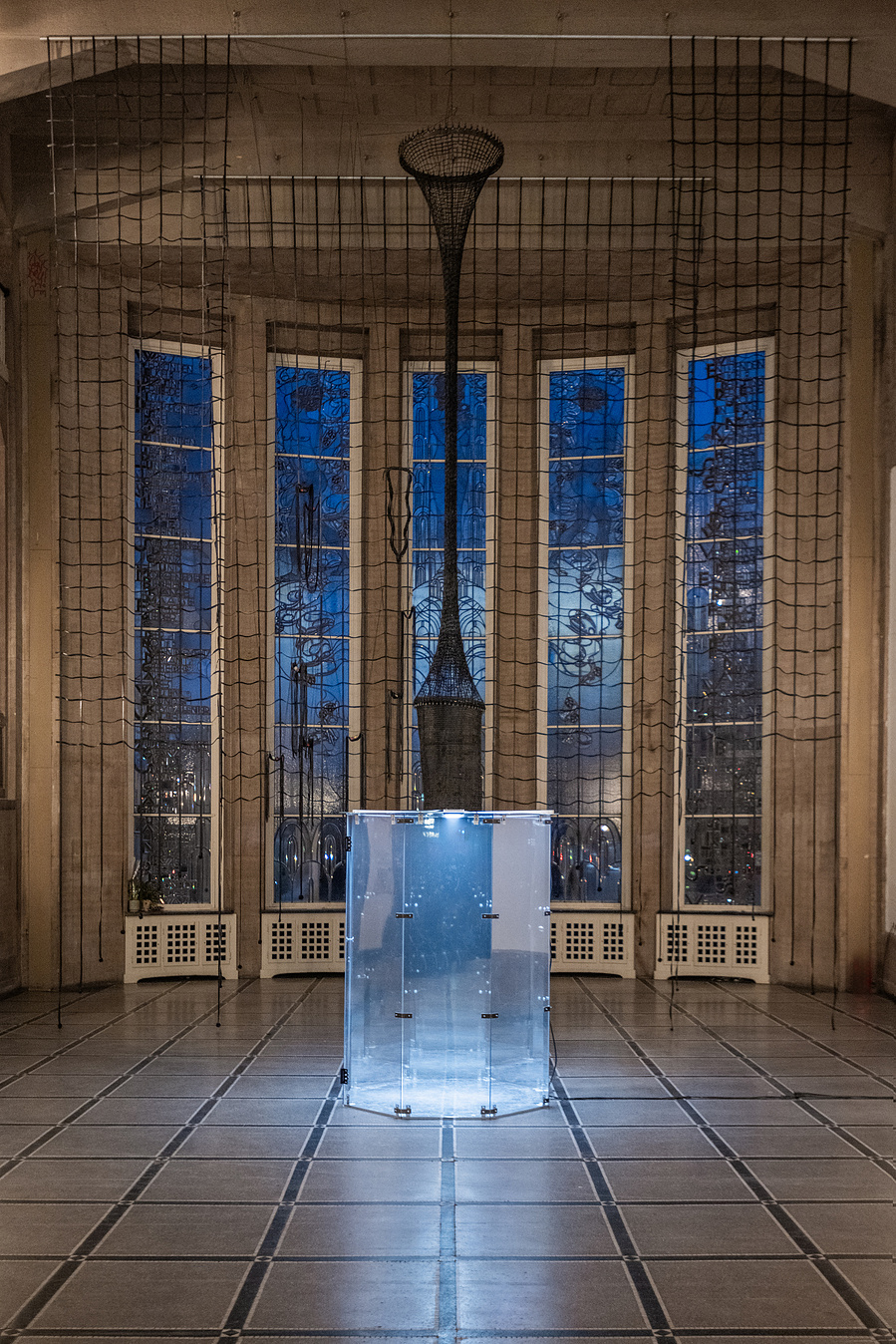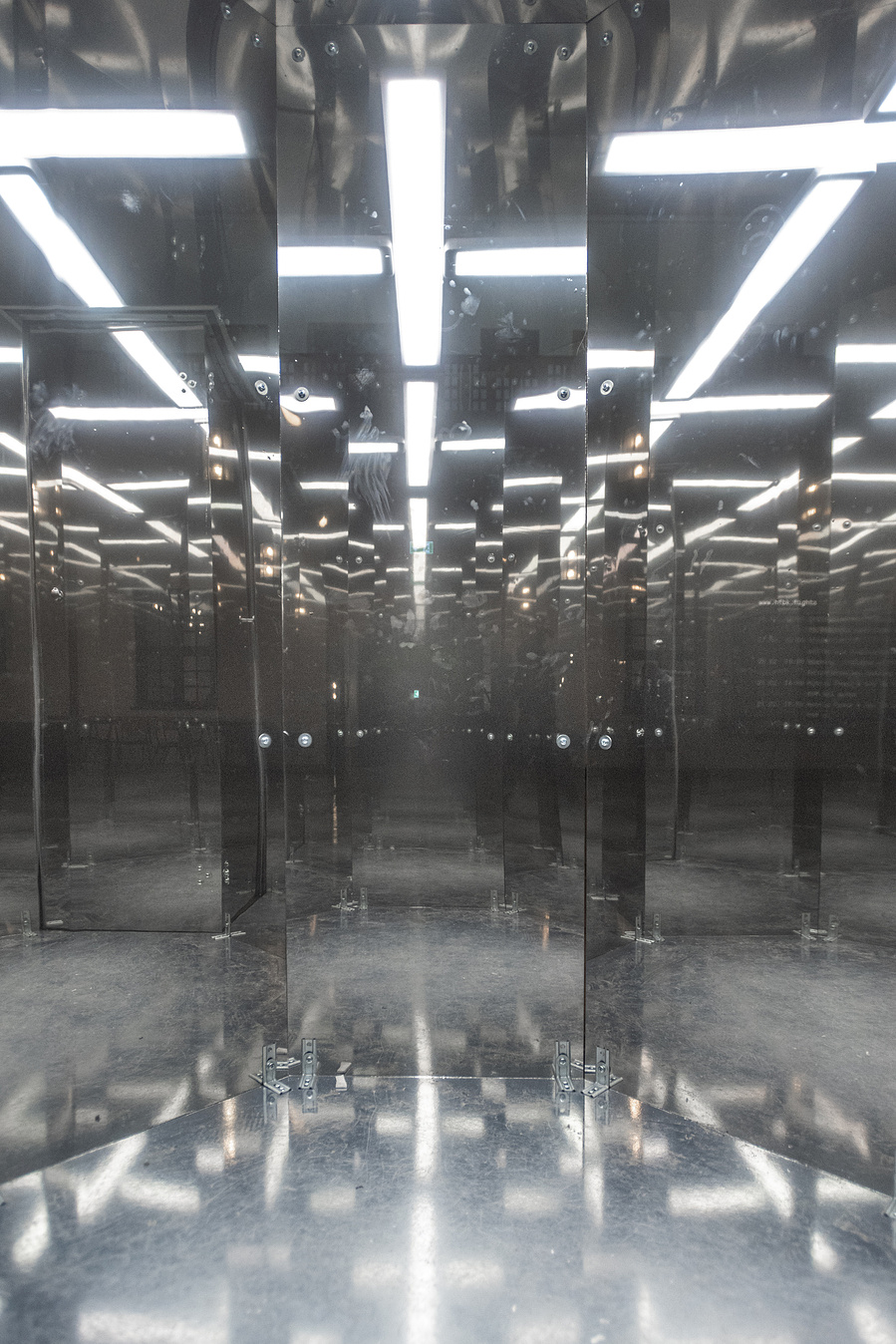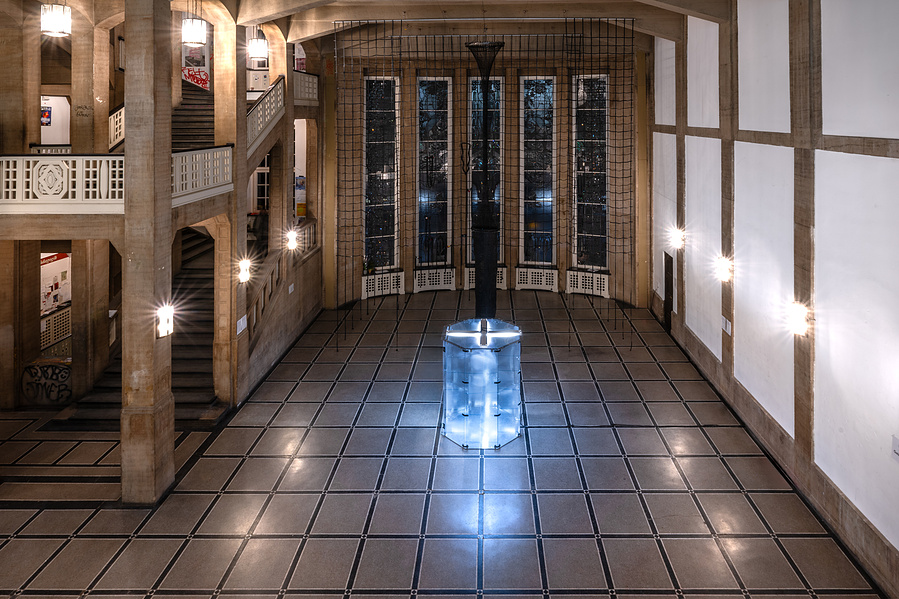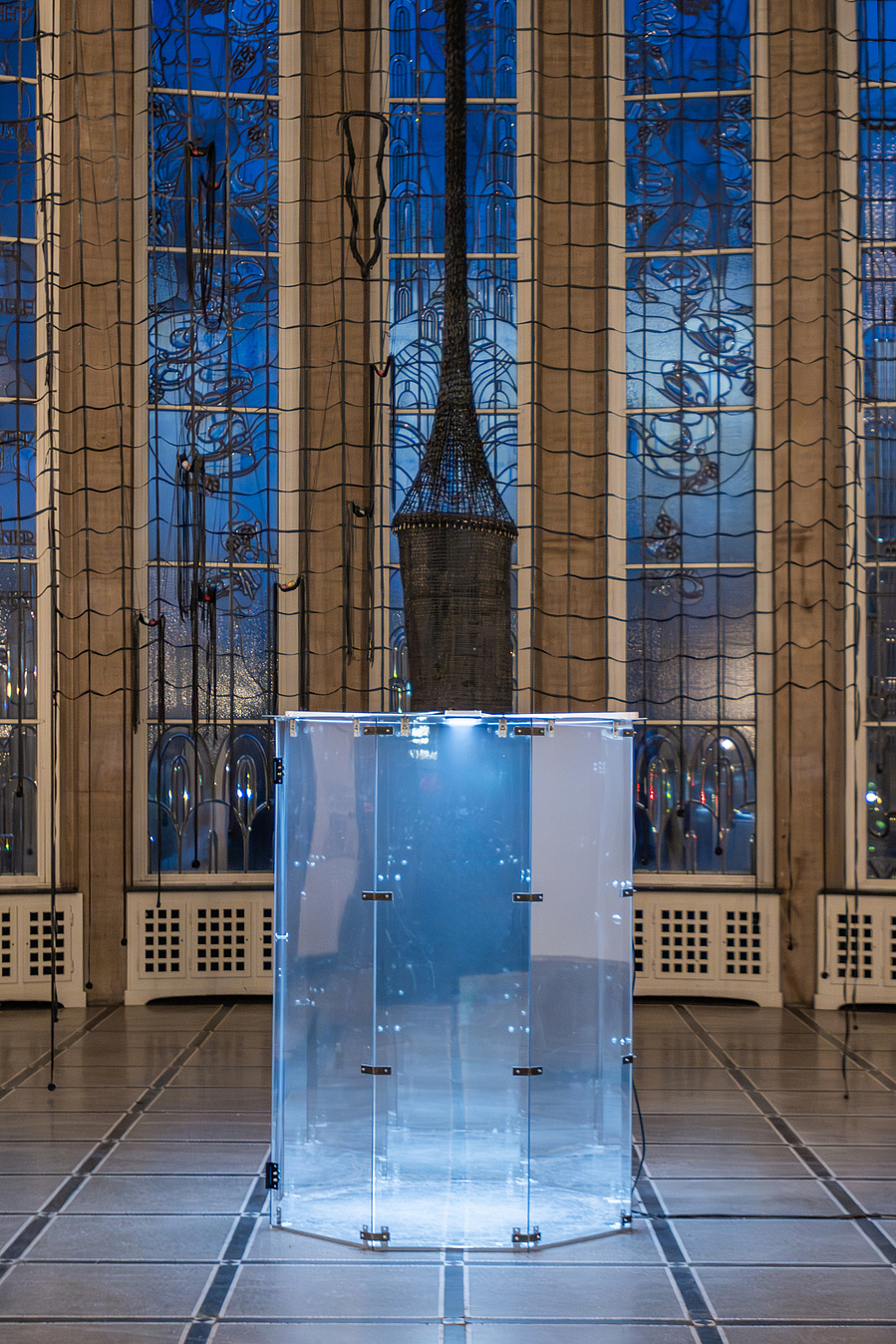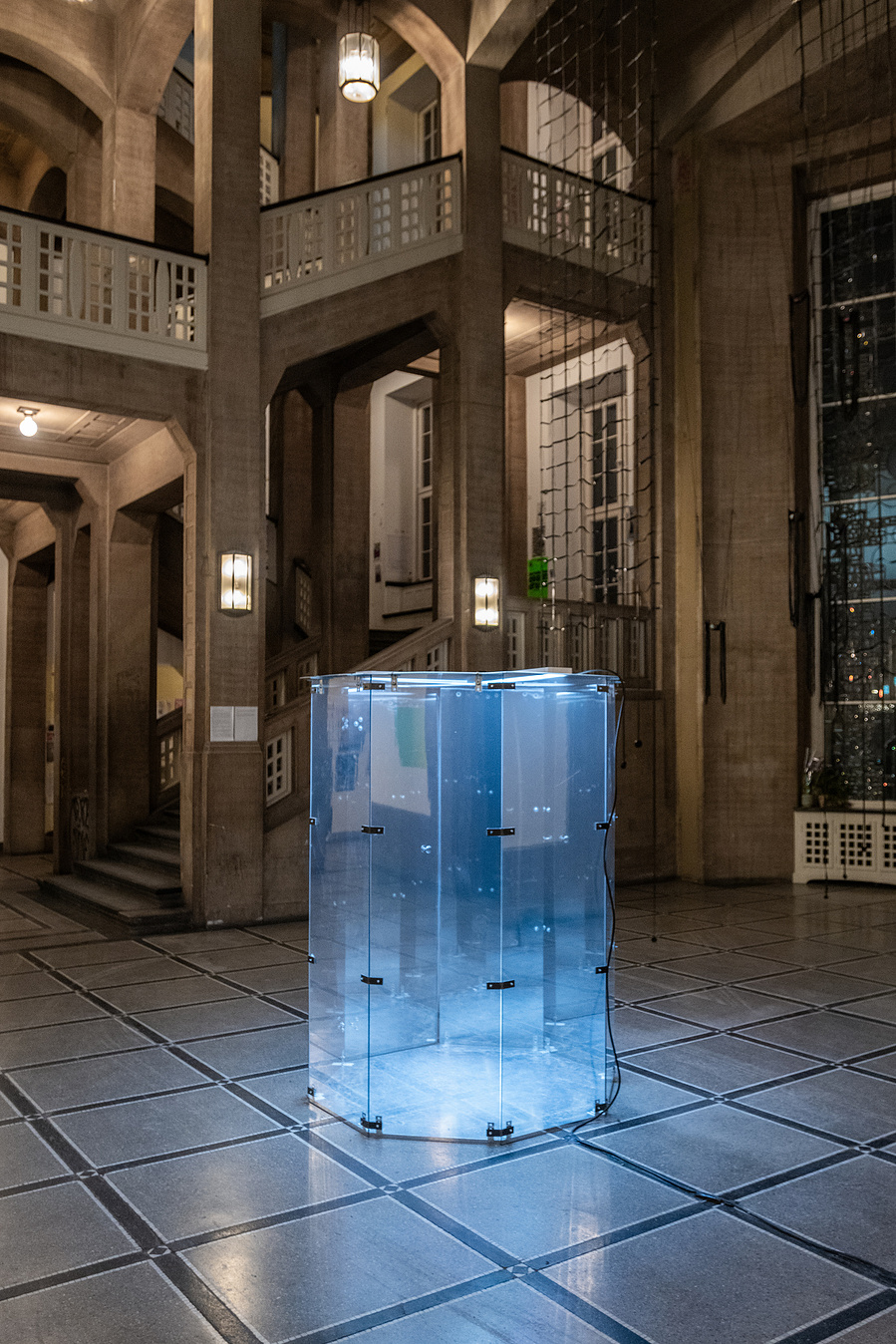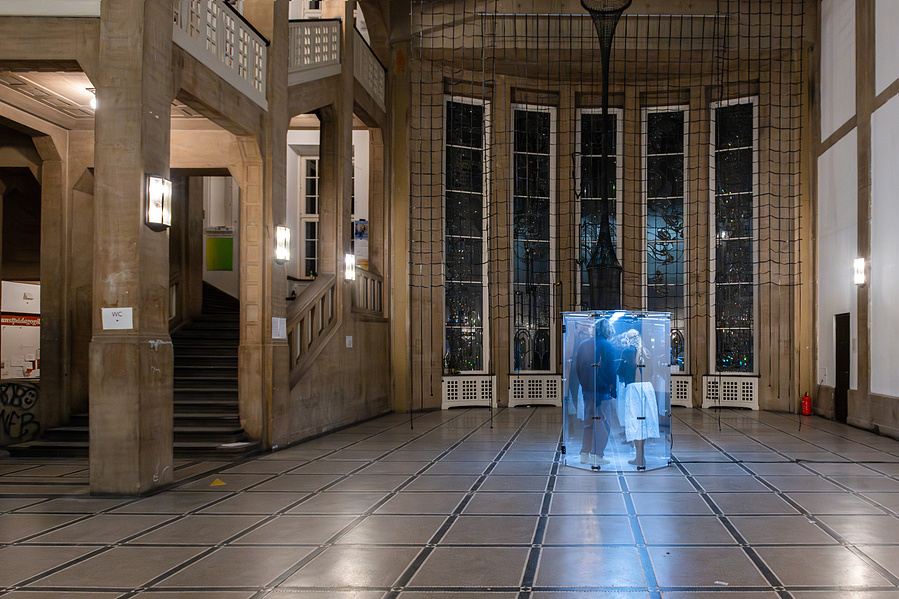
A mirror selfie. In the uploaded photo, the woman’s image in the mirror is multiplicated into infinity. She’s holding a black compact camera:
‘Leonardo da Vinci sketched an octagonal chamber of mirrors in which a visitor could see all sides of their body, infinitely reflected, even though the technology for creating such mirrors did not exist in his time. His sketch was replicated at a da Vinci exhibition in Manchester. The sign on the entrance said ‘no photos’. I could not resist and neither could Ceris who borrowed my camera for this self portrait.’. Anne M., uploaded on May 19, 2013, taken on August 21, 2010.
Agnieszka Sejud’s installation invites its guests to enter the reinterpreted Leonardo da Vinci’s chamber, the same Anne M. entered with a friend in the summer of 2010 and couldn’t resist taking the photo of herself. Each wall is an infinite multiplication of the body inside the room. One finds themselves drafted into the process of careful examination of one’s own presence, enters a perversive universe filled up with the most amazing person who ever lived. A Narcissus’ wet dream.
In Sejud’s installation da Vinci’s mirrors are inverted. She uses one-way mirrors and transforms the original project into a magnifying glass. A viewer becomes the subject of a case study not only for oneself but also for those orbiting around the piece.
Mirror is a symbol of the process of self-identification as well as of vanity and a woman’s attribute. This aligns with the ever-growing number of women ready to cut, hurt, starve themselves, and of excised parts of their healthy bodies. A medical answer to the female thirst for an Instagram hot-girl body.
To want a perfect body must be a woman’s vanity, never-satisfied hunger for male attention, and narcissistic self-obsession, but not having one means erasure. Having an aging or ugly body usually equals losing relevance, and not being able to measure up to her gendered life. Ultimately, Changing Room plays with the concept of introjection. We all, men and women, want to be objects of infatuation and share a need for self-display however, it seems that when a man’s self-portrait is built on an active contact with the world through his actions, a woman’s derives from poses she does before spectators’ eyes, reflecting herself in their glances. Andrea Long Chu in her book Females writes:
‘I’ll define as female any psychic operation in which the self is sacrificed to make room for the desires of another. These desires may be real or imagined, concentrated or diffuse—a boyfriend’s sexual needs, a set of cultural expectations, a literal pregnancy—but in all cases, the self is hollowed out, made into an incubator for an alien force.’
text by Maria Stusio
photos by Sergiej Hufnagel
Changing Room
mirror installation
193 x 135 x 135 cm
polycarbonate panels, acrylglas, mdf plate, one way mirror foil, steel profiles, light source
